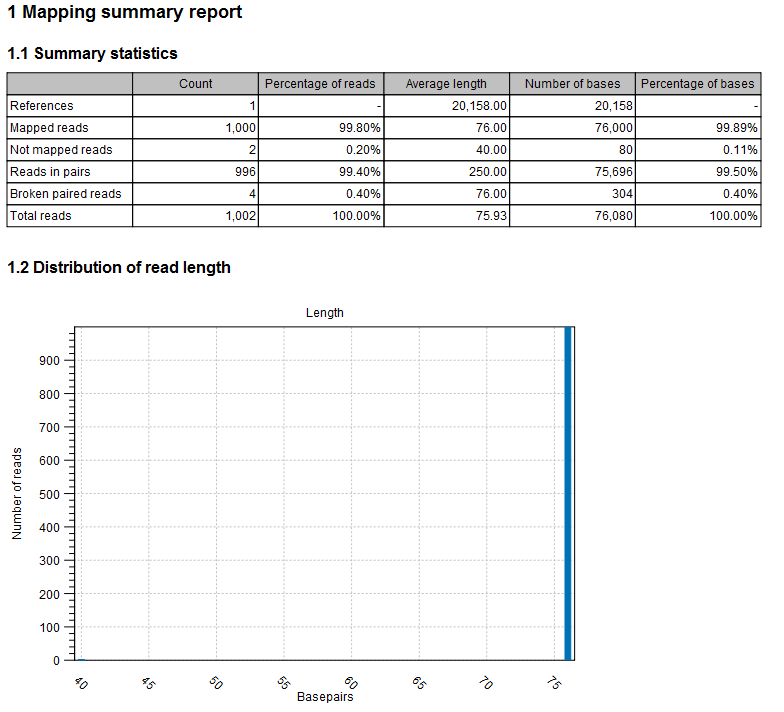Summary mapping report
If you choose to create a report as part of the read mapping (see read mapping), this report will summarize the results of the mapping process. An example of a report is shown in figure 22.19.

Figure 22.19: The summary mapping report.
The information included in the report is:
- Summary statistics A summary of the mapping statistics, e.g. count, percentage of reads, average length, number of bases and percentages of bases for the following type of reads:
- References
- Mapped reads
- Not mapped reads
- Reads in pairs
- Broken paired reads
- Total reads
- Distribution of read length For each sequence length, you can see the number of reads and the distribution in percent. This is mainly useful if you don't have too much variance in the lengths as you have in Sanger sequencing data for example.
- Distribution of mapped reads length Equivalent to the above, except that this includes only the reads that have been matched to a contig.
- Distribution of unmapped reads lengths Show the distribution of lengths of the unmapped sequences.
- Paired reads distance distribution Show the distribution of paired reads distances.
You can copy the information from the report by selecting in the report and click Copy (![]() ). You can also export the report in Excel format.
). You can also export the report in Excel format.
